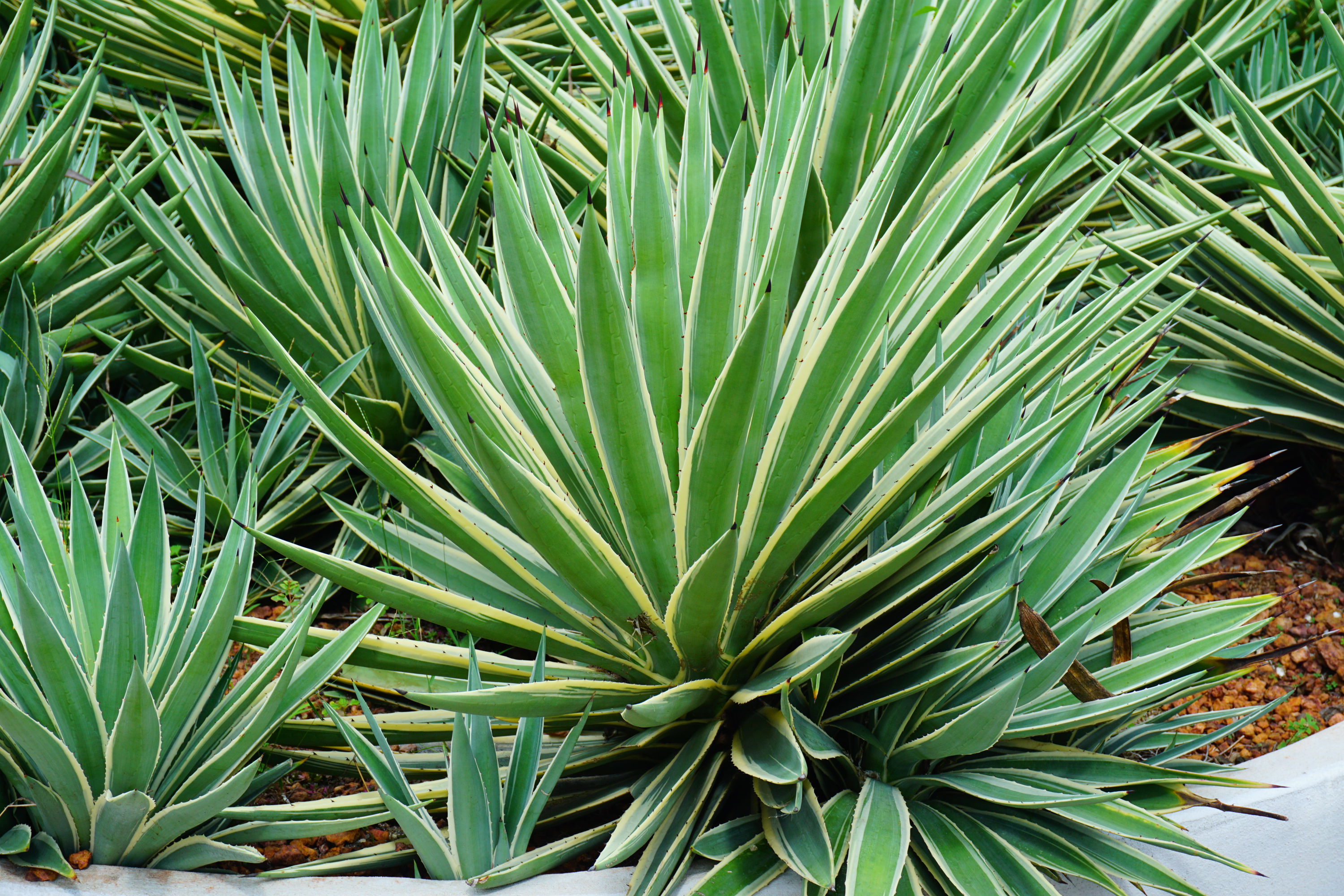Century Plant
(Agave americana)

Description
Agave americana, common names century plant, maguey, or American aloe, is a species of flowering plant in the family Asparagaceae, native to Mexico and the United States in Texas. Although it is called the century plant, it typically lives only 10 to 30 years. It has a spread around 1.8–3.0 m (6–10 ft) with gray-green leaves of 0.9–1.5 m (3–5 ft) long, each with a prickly margin and a heavy spike at the tip that can pierce deeply. Near the end of its life, the plant sends up a tall, branched stalk, laden with yellow blossoms, that may reach a total height up to 8–9 m (25–30 ft). Its common name derives from its semelparous nature of flowering only once at the end of its long life. The plant dies after flowering, but produces adventitious shoots from the base, which continue its growth. A. americana was one of the many species described by Carl Linnaeus in the 1753 edition of Species Plantarum, with the binomial name that is still used today. If the flower stem is cut before flowering, a sweet liquid called aguamiel ("honey water") gathers in the hollowed heart of the plant. This can be fermented to produce the alcoholic drink called pulque. The leaves also yield fibers, known as pita, which are suitable for making rope, matting, or coarse cloth. They are also used for embroidery of leather in a technique known as piteado. Both pulque and maguey fiber were important to the economy of pre-Columbian Mexico, where the fermented drink was known as octli. In the tequila-producing regions of Mexico, agaves are called mezcales. The high-alcohol product of fermented agave distillation is called mezcal; A. americana is one of several agaves used for distillation. A mezcal called tequila is produced from Agave tequilana, commonly called "blue agave". The many different types of mezcal include some which may be flavored with the very pungent mezcal worm. Mezcal and tequila, although also produced from agave plants, are different from pulque in their technique for extracting the sugars from the heart of the plant, and in that they are distilled spirits. In mezcal and tequila production, the sugars are extracted from the piñas (or hearts) by heating them in ovens, rather than by collecting aguamiel from the plant's cut stalk. Thus, if one were to distill pulque, it would not be a form of mezcal, but rather a different drink. Agave nectar is marketed as a natural form of sugar with a low glycemic index that is due to its high fructose content.
Taxonomic tree:







